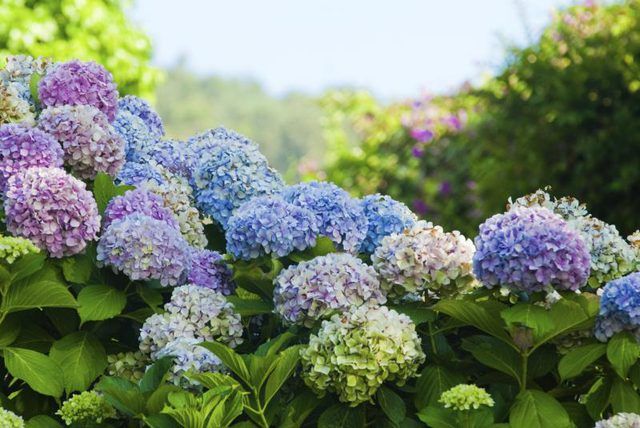Bulbs
Flower Basics
Flower Beds & Specialty Gardens
Flower Garden
Garden Furniture
Garden Gnomes
Garden Seeds
Garden Sheds
Garden Statues
Garden Tools & Supplies
Gardening Basics
Green & Organic
Groundcovers & Vines
Growing Annuals
Growing Basil
Growing Beans
Growing Berries
Growing Blueberries
Growing Cactus
Growing Corn
Growing Cotton
Growing Edibles
Growing Flowers
Growing Garlic
Growing Grapes
Growing Grass
Growing Herbs
Growing Jasmine
Growing Mint
Growing Mushrooms
Orchids
Growing Peanuts
Growing Perennials
Growing Plants
Growing Rosemary
Growing Roses
Growing Strawberries
Growing Sunflowers
Growing Thyme
Growing Tomatoes
Growing Tulips
Growing Vegetables
Herb Basics
Herb Garden
Indoor Growing
Landscaping Basics
Landscaping Patios
Landscaping Plants
Landscaping Shrubs
Landscaping Trees
Landscaping Walks & Pathways
Lawn Basics
Lawn Maintenance
Lawn Mowers
Lawn Ornaments
Lawn Planting
Lawn Tools
Outdoor Growing
Overall Landscape Planning
Pests, Weeds & Problems
Plant Basics
Rock Garden
Rose Garden
Shrubs
Soil
Specialty Gardens
Trees
Vegetable Garden
Yard Maintenance
How to Grow Hydrangeas
How to Grow Hydrangeas. Among the plants for whom the description "big-headed" is a compliment, hydrangeas make spherical, flat or cone-shaped clusters of white, pink, red or blue bracts, sometimes accompanied by tiny flowers. Hydrangeas (Hydrangea spp.) vary in height from 3 to 25 feet for shrub types, while climbing varieties scramble...

Among the plants for whom the description "big-headed" is a compliment, hydrangeas make spherical, flat or cone-shaped clusters of white, pink, red or blue bracts, sometimes accompanied by tiny flowers. Hydrangeas (Hydrangea spp.) vary in height from 3 to 25 feet for shrub types, while climbing varieties scramble to 80 feet. Most bloom at some point between late spring and late summer, their hardiness ranging from U.S. Department of Agriculture plant hardiness zones 3 through 10.
Types and Spacing
Hydrangea types include bigleaf (Hydrangea macrophylla, USDA zones 6 through 12), panicle (Hydrangea paniculata, USDA zones 3 through 8), oakleaf (Hydrangea quercifolia, USDA zones 5 through 9), smooth (Hydrangea arborescens, USDA zones 3 through 9) and climbing (Hydrangea anomala petiolaris, USDA zones 4 through 8) varieties.
The bigleaf hydrangea produces the most colorful flowers -- in blue, pink, red or white -- either globular heads of bracts called mopheads or flatter clusters of tiny blooms surrounded by bracts called lacecaps. The smooth hydrangea and the climbing hydrangea turn out mopheads and lacecaps, respectively, but all in white. Panicle and oakleaf hydrangeas both wield long panicles of white or greenish-white bracts, which age to pink or red. As most types grow to about the same width as their height, they should be spaced accordingly, usually between 3 to 10 feet apart.
Sun and Soil
Hydrangeas prefer humus-rich and well-drained soil in a position where they will receive sunlight during the morning and shade during the afternoon. However, the panicle hydrangea tolerates full sun and actually may bloom more heavily under those brighter conditions.
Keep in mind that hydrangeas that can produce either blue or pink flowers should make blue ones in soil with a pH below 5.5 and pink ones in soil with a pH above 6.0, though the color can vary in the intermediate part of that range. White-flowered hydrangeas will bloom white no matter where they are planted.
Food and Water
A hydrangea bush should receive about 1/2 cup of a 10-10-10 chemical fertilizer or 1 cup of an organic 5-5-5 fertilizer for every 20 square feet of ground. For a bigleaf hydrangea, divide that fertilizer into three applications in March, May and July, using 1/6 cup of the chemical fertilizer or 1/3 cup of the organic fertilizer each time. For oakleaf and panicle hydrangeas, separate the fertilizer into two applications – of 1/4 cup of chemical fertilizer or 1/2 cup of organic fertilizer each -- in April and June. For the smooth and climbing hydrangeas, you can just make one application of the full amount in late winter or early spring. Always scatter the fertilizer over the area of ground indicated, scratching and watering it into the surface of the soil.
Hydrangeas require at least 1 inch of water per week from either rainfall or irrigation, up to 2 inches per week under hot and dry conditions. The shrubs wilt easily, so their soil should never be allowed to dry out completely. Mulch them with at least 2 to 4 inches of shredded bark or another organic substance to help maintain that moisture.
Pointers and Precautions
Never prune big-leafed hydrangeas in spring, as many of them bloom on old wood, and you are likely to eliminate buds if you trim branches then. Cut them back just after the shrub finishes flowering instead. Most other hydrangeas bloom on new wood and should be pruned in early spring.
In areas where bigleaf hydrangeas are only marginally hardy, surround each one with a cone of chicken wire and fill that cone with dead leaves until the top of the bush is buried at least 1 foot deep beneath them. This should help keep the buds from freezing when temperatures drop below 10 degrees Fahrenheit.